Toddler Skin Rashes Biography
Source(google.com.pk)A rash is an inflammation of the skin, accompanied with red spots, and change in texture or color of the skin. Rashes can appear either on a localized part or all over the body. Depending on the type of rash, it can either be itchy rash or non-itchy rash, scaly or non-scaly rash. In medical terms a rash is termed as exanthem. Though most rashes go away on their own, they should not be taken lightly. It is important to have your child examined by a physician.
Types of Rashes in Toddlers
These rashes can be caused due to a number of reasons, like reaction to a particular drug, insect bites, allergic reaction, exposure to some chemicals, or it can also be an infection. Symptoms vary according to the type of rash.
• Chickenpox
It is also known as varicella and is caused by a virus called varicella-zoster. This rash is not harmful, but it is contagious and lasts up to two weeks. The symptoms of chickenpox occur 12 to 21 days after the infection. However, it is important to note that a child can be exposed to it and yet not get infected by it. The most common symptoms of this rash include:
Fever
Sore throat
Fatigue
Appearance of an itchy rash
The rash initially targets body parts like the armpits, groin, or scalp. Usually a blister is formed, which ruptures into a lesion which forms a crust.
» Treatment: Calamine lotion or cooling gels help in treating the rash. There are various vaccines that help in preventing the rash.
• German Measles
German Measles is also called Rubella or Three-Day Measles. The rash is usually caused by Rubivirus. The face is the first body part which is affected by this virus. Pink rashes appear on the face, which later spread to the entire body. Often German Measles cause lymph nodes swelling behind the ear in children. Toddlers take approximately three days to recover from the rash.
» Treatment: The baby should be taken to the doctor immediately, if his fever exceeds 100ºF. The doctor might prescribe an ibuprofen or acetaminophen.
• Measles
This type of measles is also called regular or hard measles, so that it can easily be differentiated from German measles. A virus called Paramyxovirus causes measles. A vaccine to prevent measles is available in the market, which is safe and effective. After the toddler has been exposed to the virus, the symptoms are visible after 10 to 12 days. The symptoms of measles include:
Cough
Fever
Nasal congestion
Redness of the eyes
Decreased appetite
On the third or fourth day of the symptoms, a brown rash is seen on the face, which then spreads to the entire body. The rash usually lasts three to four days.
» Treatment: Monitoring the child's temperature can provide relief from the rash. Liquid infant paracetamol can be used, after consulting a doctor.
• Roseola Infantum
It is caused by human herpes virus 6. Roseola infantum affects children below the age of 2. The most common symptom is a high fever that stays for 2 to 5 days. As the fever starts to go away the rash appears. The rash is pink in color and has lesions, which first appears on the stomach, and spreads to the extremities of the body.
» Treatment: The fever can be treated with ibuprofen or acetaminophen. Prevent your child from getting dehydrated by giving him plenty of fluids. The rash disappears when the body temperature comes back to normal.
• Eczema
There are two reasons, which can cause eczema. First is the genetic structure, and the other is allergy to different irritants or food. Usually toddlers with dry skin are affected with eczema, also called atopic dermatitis. The most common characteristic is itching. Children develop itchy red rashes on their cheeks as the first symptom of eczema. The rash then spreads to inner elbows, behind the knees, neck, and then all over the body, specially the groin. It is itching that makes the child restless and irritated, usually at night.
» Treatment: Bathe the child in lukewarm water. Only mild soaps should be used for bathing. Moisturize the child's skin with a moisturizer or emollient. Use cotton clothing for the kid, avoid synthetic materials.
• Diaper Rash
This is a form of dermatitis, which affects the buttocks, genitals, thigh folds, and the lower abdomen of the toddler. Diaper rash is caused when the toddler's diaper is not changed frequently and the feces remain in contact with the skin. Usually this rash is flat and red in appearance.
» Treatment: This rash is usually caused due to allergy to the diaper material. Make sure that you change the diapers regularly when they are soiled to prevent this rash. Using ointments like zinc oxide or A&D ointment can help in treating the rash. It is recommended that one use cotton diapers at least till the rash has disappeared. If the rash persists for a prolonged period, seek medical advice.
• Scarlet Fever
Streptococcal bacteria causes fever, redness, and swelling of the throat and tonsils. It is also known as strep throat. Scarlet fever is strep throat accompanied by rashes. The symptoms of this condition are sore throat and fever. After one or two days of the symptoms, a red rash similar to the coarseness of sandpaper appears all over the child's body. The rash in some cases can also be seen around the vagina and/or anus.
» Treatment: Make sure your child drinks plenty of fluids. Use a cool mist humidifier, or wrap a moist towel around the child's neck to soothe his throat. This rash is very contagious, but can be prevented, if the child's hands are washed at regular intervals all through the day.
• Hives
This is an allergic rash, which is caused due to allergy to certain foods, medications, soaps, clothing, grass, etc. The characteristic of this kind of rashes is that they appear on a particular body part to disappear in some time, but recur on other body part. The shape of this rash is often irregular and can either be separate or clustered together. In some cases, hives can make an appearance, if children have fever. The condition can be serious if you observe symptoms like wheezing, difficulty in breathing, vomiting, etc., along with the hives.
» Treatment: Use cooling gel or calamine lotion on the rash to soothe itching. Trim and clean the baby's nail to avoid damage if the rash is scratched. Dress the baby in loose cotton clothing. Use mild soap or cleansers while bathing the baby.
One should seek immediate medical advice if the rashes persist for more than 3 days, or if unexplained symptoms occur. Never give the child any medicine without consulting a doctor.

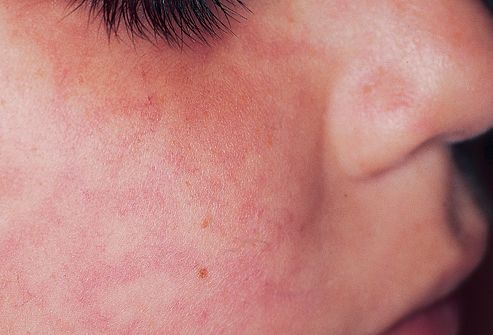

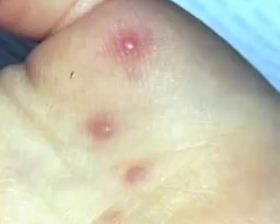

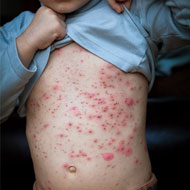
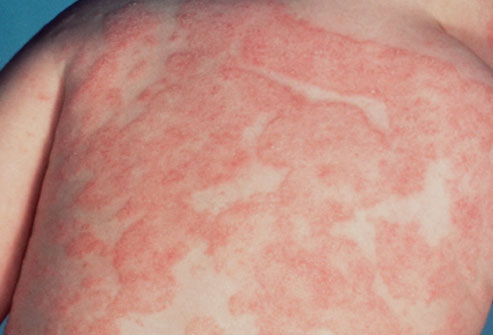
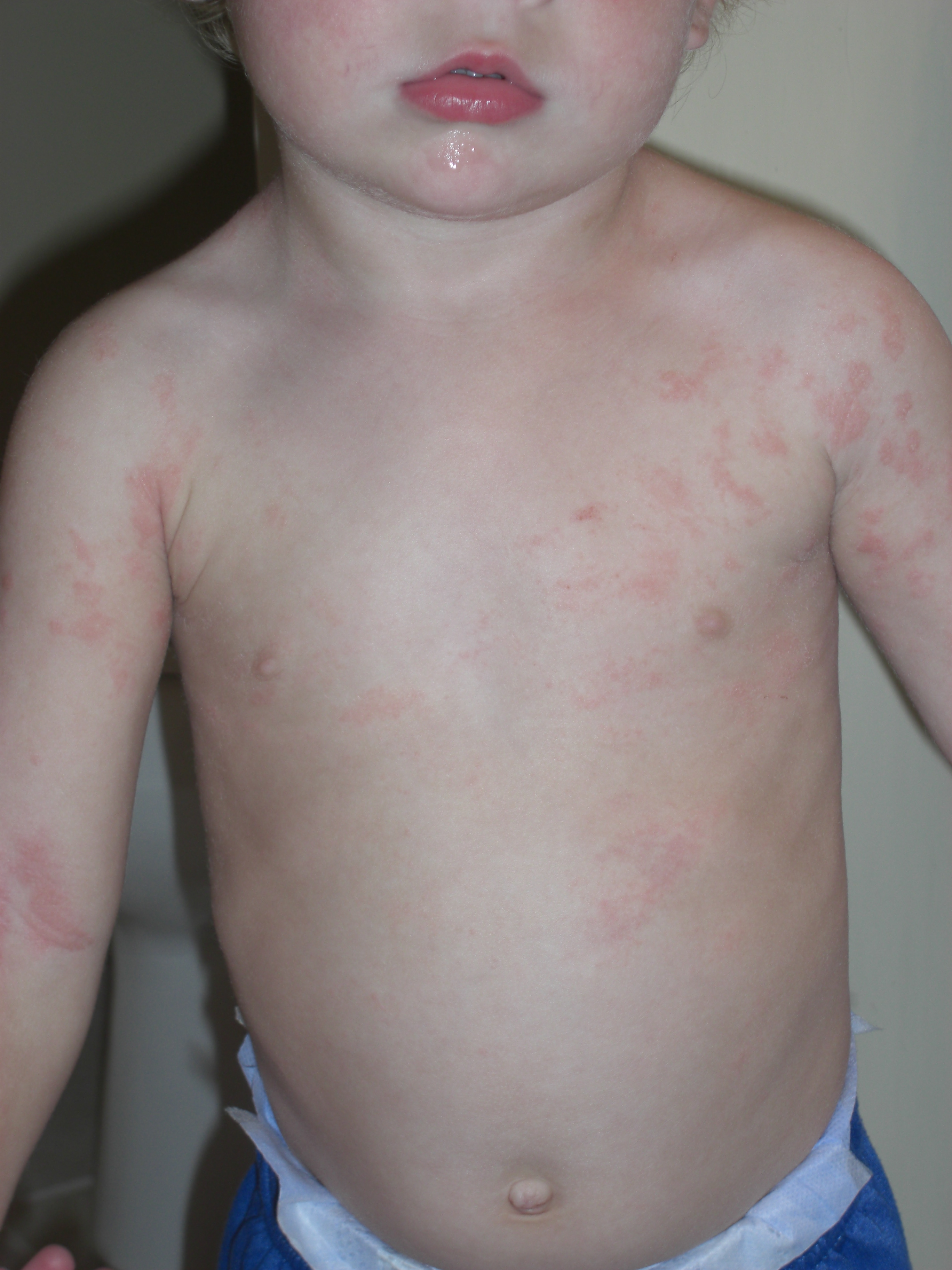


No comments:
Post a Comment